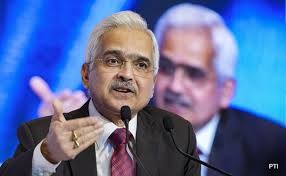In the last meeting of the Reserve Bank of India’s (RBI’s) rate-setting body in December, the Monetary Policy Committee (MPC), there was no change in the interest rate as well as the policy stance. For the fifth meeting in a row, the repo rate remained unchanged at 6.5 per cent and, the stance, “withdrawal of accommodation”.
What has changed since then?
Let’s look at the domestic scene.
The retail inflation track was a positive surprise in December — 5.69 per cent, led by lower veggie inflation. What’s more, the non-food, non-oil core inflation has remained soft. After dropping to its four-month low of 4.87 per cent in October, from 5.02 per cent in September, it rose to 5.55 per cent in November. Its peak during FY24 is 7.44 per cent (in July 2023).
For the first time since March 2020, core inflation dropped below 4 per cent (to 3.9 per cent) in December, from 4.1 per cent in November. This offers a cushion to absorb food price shock, if any, in future, but how long will core inflation remain below 4 per cent? Historically, core inflation leaps back to above 4 per cent within four months, driven by either higher commodity prices or a domestic development such as higher housing inflation between September 2017 and November 2018 on pay revision of government employees.
The Brent crude price, which was $79 on December 1, has remained range bound — $78.39 last Friday.
Growth in the index of industrial production (IIP) faltered to its eight-month low of 2.4 per cent in November 2023, sharply down from 11.6 per cent in October and 7.6 per cent a year ago. All three components of IIP slipped in November; manufacturing was the biggest drag. However, in the first eight months of the current fiscal year, IIP growth is 6.4 per cent, up from 5.6 per cent in the corresponding period of last year.
Meanwhile, the local currency has strengthened vis-à-vis the dollar and the 10-year government bond yield has been coming down, making the treasury managers smile.
In the first week of December, the rupee had hit its all-time closing low against the dollar (83.3938). Last week’s closing level was 82.92. The 10-year bond yield is down from 7.29 per cent in early December to 7.04 per cent over the weekend.
The trigger for both has been Finance Minister Nirmala Sitharaman sticking to the fiscal consolidation path in the interim Budget. The revised estimate of fiscal deficit for FY24 is 5.8 per cent of gross domestic product (GDP), 10 basis points less than the earlier estimate. One hundred basis points make one percentage point. For FY25, the fiscal deficit target is 5.1 per cent of GDP. Both the figures are better than what most analysts were estimating.
Following this, the market borrowing programme for the next fiscal year is on expected lines. The gross market borrowing for the year is estimated at ~14.13 trillion; and net borrowing ~11.75 trillion. Of course, there is a catch. Since redemptions of bonds for FY25 are to the tune of ~3.61 trillion, the gross borrowing should have been ~15.36 trillion. The difference of ~1.23 trillion is being made up from the flow of the so-called GST compensation pool.
The stance of the Budget should have an implicit effect on monetary policy. What the global central banks are doing too will influence the MPC discussion despite all talks about India being decoupled.
Last week, the US Federal Reserve decided to hold the policy rate unchanged for the fourth time in a row at a 23-year high of 5.25-5.5 per cent. The decision was unanimous at the Federal Open Market Committee.
But the tone of the latest policy is different from the earlier policies that had indicated a willingness to keep raising interest rates until inflation had been brought under control. At the same time, there is no plan yet to cut rates with inflation still running above the Fed’s 2 per cent target.
Fed Chairman Jerome Powell ruled out a rate cut in March, but said the rate was “likely at its peak” for the current tightening cycle. “If the economy evolves broadly as expected, it will likely be appropriate to begin dialling back policy restraint at some point this year,” he said.
A day later, the Monetary Policy Committee of the Bank of England voted 6-3 in favour of holding the key rate unchanged at the current level of 5.25 per cent, the highest since the 2008 financial crisis. While two dissenters favoured a further 25 basis point hike, one voted for a cut by equal measure. This is for the first time since August 2008 that the nine-member committee saw a three-way split.
More importantly, the committee removed key guidance that borrowing costs may have to rise again while Governor Andrew Bailey indicated that keeping rates unchanged would push inflation “significantly” below the target of 2 per cent.
In the last week of January, the European Central Bank held interest rates at a record-high 4 per cent and reaffirmed its commitment to fighting inflation even as it is pretty evident that the time to start easing borrowing costs is approaching.
Clearly, both the US Fed and Bank of England have taken the tightening bias off the table. The cycle has ended and it’s a question of time before we see the first rate cut by them.
The question is: Will the RBI follow the same path? There’s no doubt that a rate cut will not happen next week and even in the next policy in April. But will the MPC change the stance from “withdrawal of accommodation” to “neutral”? Or will it wait for the forecast on the monsoon? It could be a close call.
How will the RBI take the tightening bias of the table? If it doesn’t change the stance, the statement will be nuanced and dovish, conveying this. Also, maintaining the status quo on the stance will certainly be not unanimous at the MPC meeting.
There is too much noise in the banking industry about the liquidity deficit in the system. It was as much as ~3.248 trillion on January 24. Since then, the deficit has come down and will ease further with the government spending gaining momentum towards the end of the fiscal year. The RBI has been using all tools at its arsenal to manage liquidity. This will continue while the decision on rate cut will be data-driven.
The December policy didn’t change the inflation projection. It’s 5.4 per cent for FY24 — 5.6 per cent in the third quarter and 5.2 per cent in the fourth. Don’t expect any tinkering here.
The last policy raised the real GDP growth estimate for the current year to 7 per cent, half a percentage point more than what the RBI had been saying since April 2023. After growing at 7.8 per cent in the first quarter and 7.6 per cent in the second, the GDP has to grow on an average 6.3 per cent in the next two quarters to achieve this.
It will be interesting to know the central bank’s growth estimate for FY25. Sitharaman has spoken about 10.5 per cent nominal growth while Governor Shaktikanta Das has hinted at 7 per cent real GDP growth next year. To sync both the estimates, the inflation needs to be capped at 3.5 per cent. Since that’s not possible, will Das mute his optimism on growth?
This column first appeared in Business Standard
The writer, Senior Adviser to Jana Small Finance Bank, is a Consulting Editor with Business Standard.
Writes Banker’s Trust every Monday.
Latest book Roller Coaster: An Affair with Banking
Twitter: TamalBandyo
Website: https://bankerstrust.in



